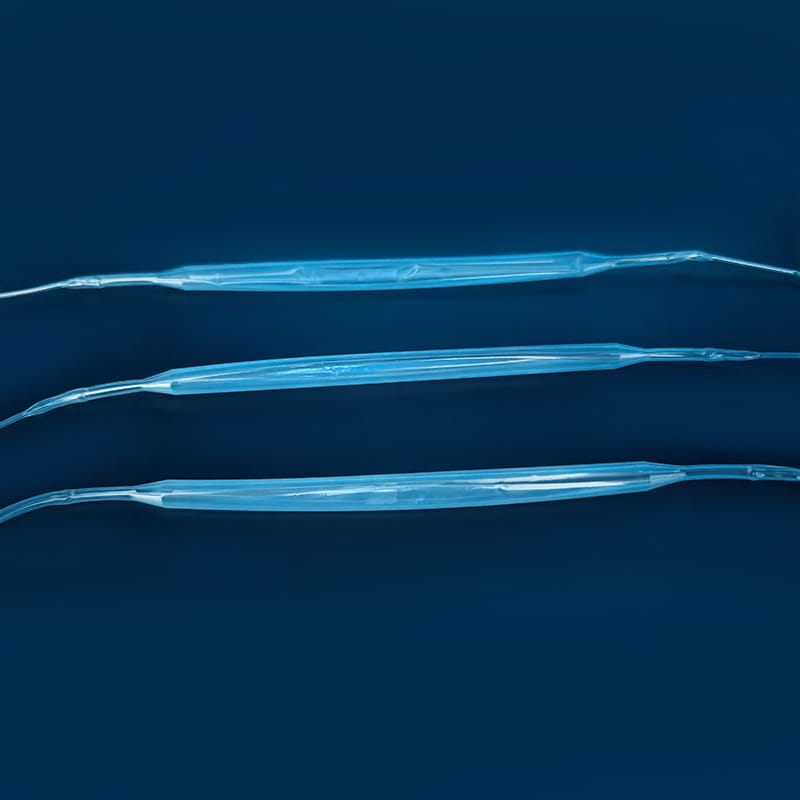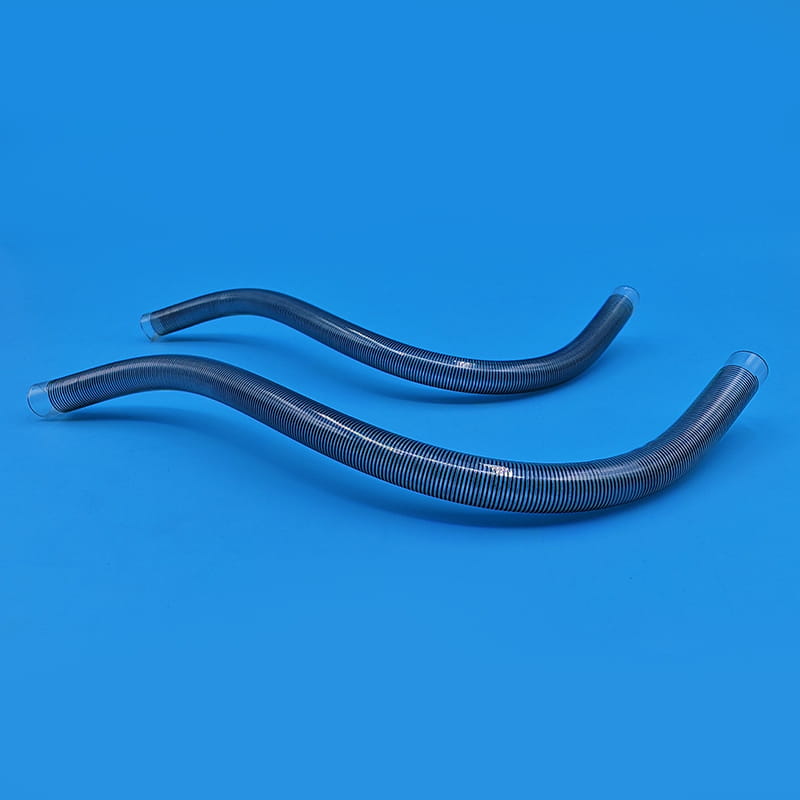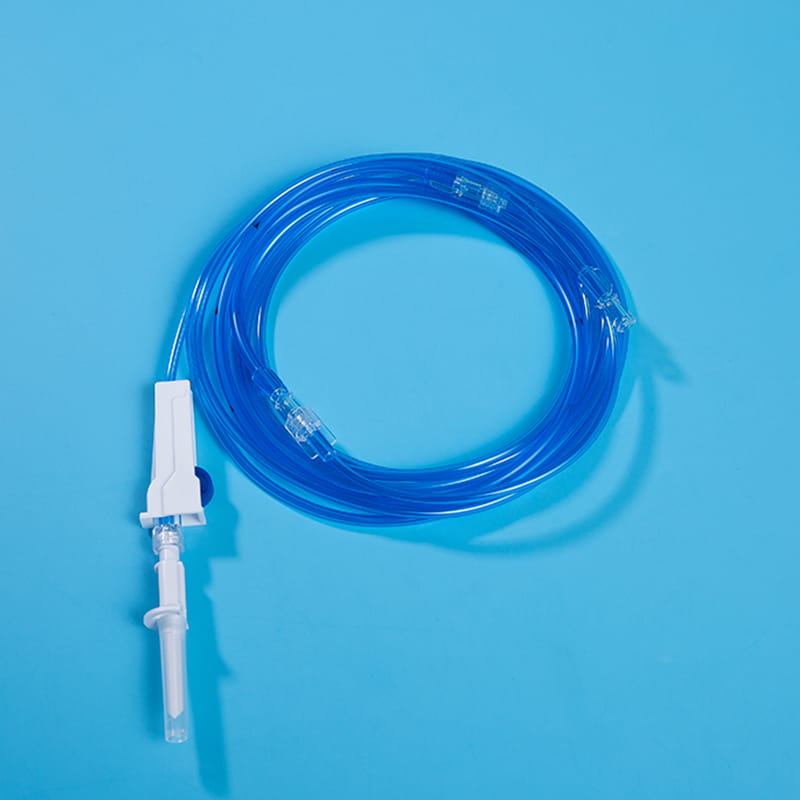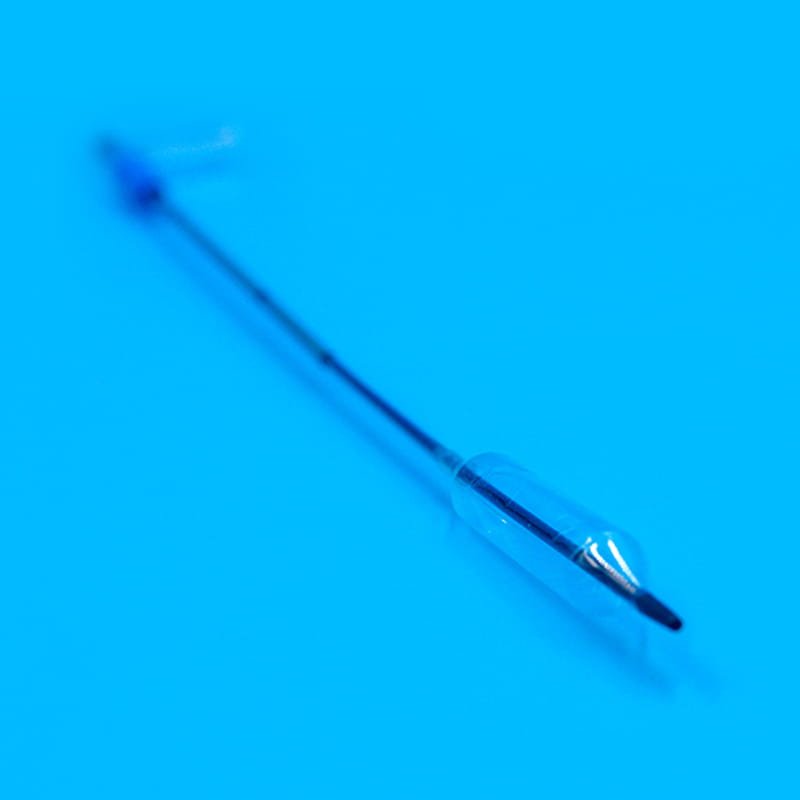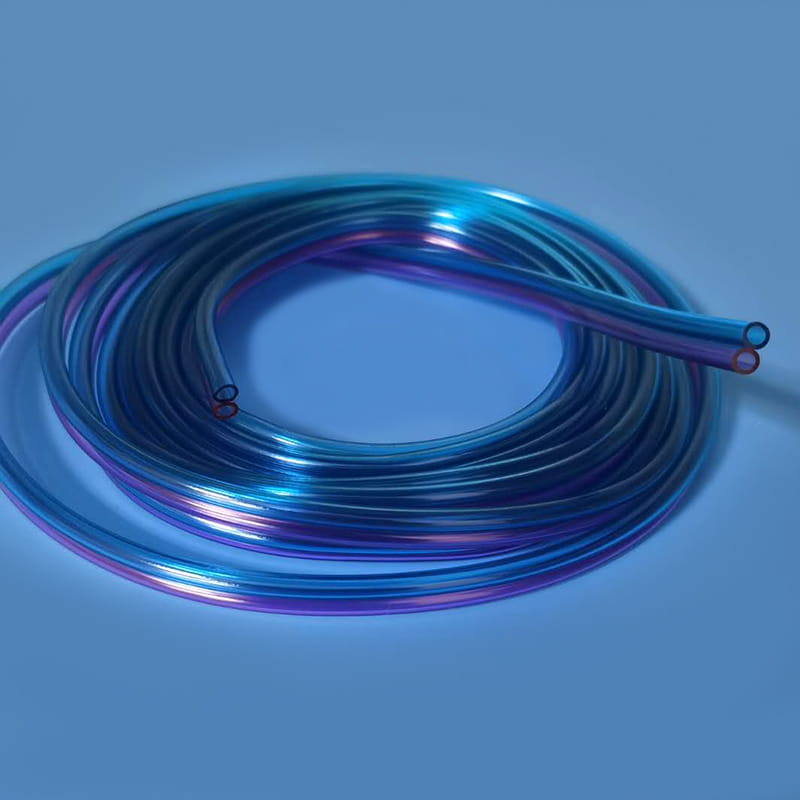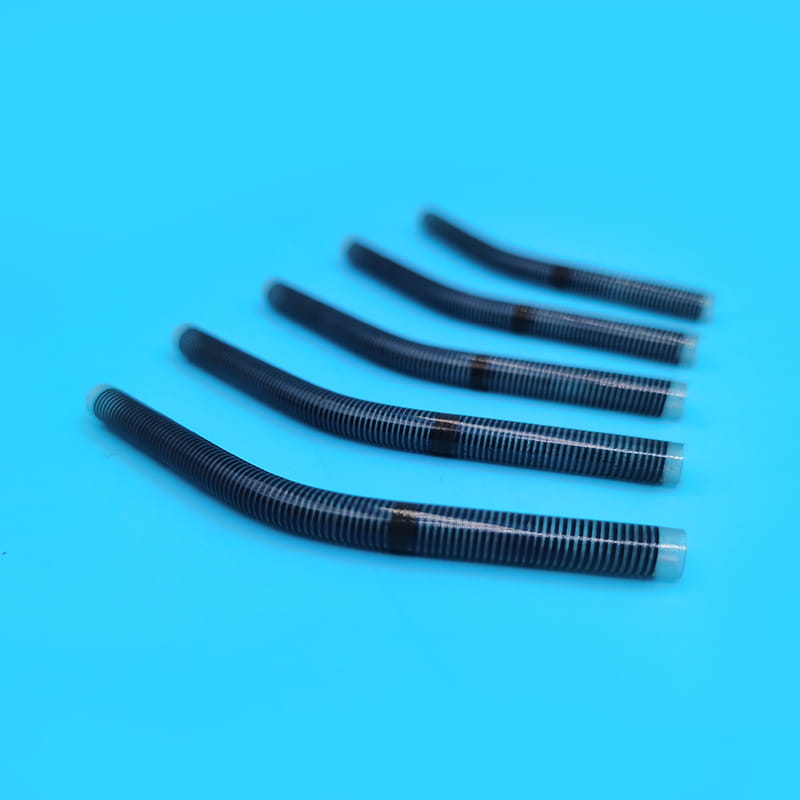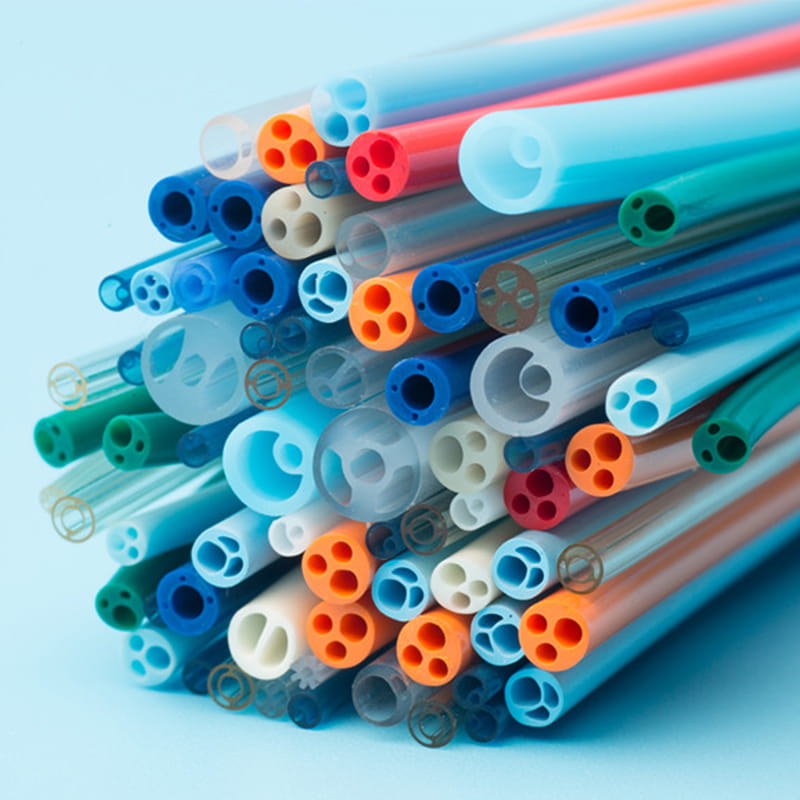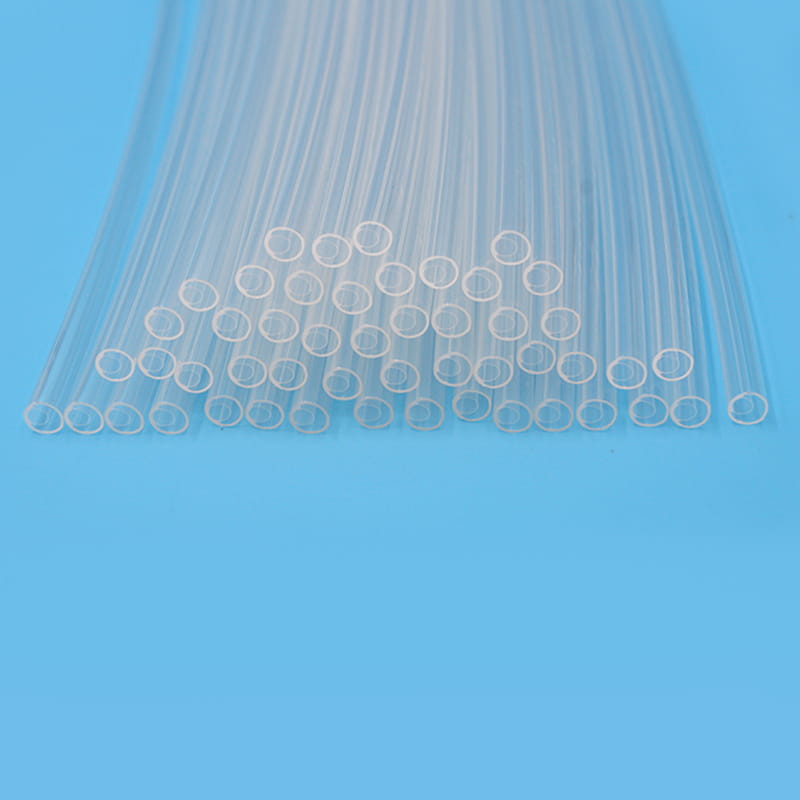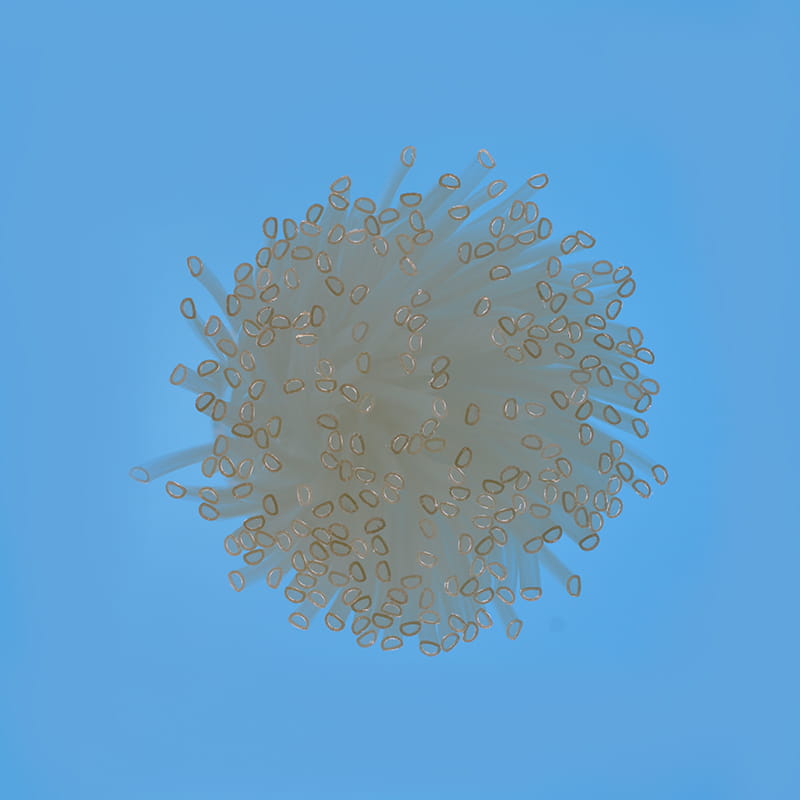Nickel-Titanium Spring Production Process
Ni-Ti springs are functional components manufactured based on the properties of nickel-titanium shape memory alloy (SMA). They are widely used in medical, aerospace, electronics, and other fields. The production process requires strict control of composition, microstructure, and mechanical properties. The core process is centered around five key steps: material preparation - forming - heat treatment - post-processing - performance testing. The specific process and key technologies are as follows:
Core Raw Material Preparation: Nickel-Titanium Alloy Rod/Wire Preparation
The core performance of nickel-titanium springs depends on the uniformity of the nickel-titanium alloy's composition (the nickel content is typically 50.5% to 51.2% (atomic ratio) and must be precisely controlled to ensure shape memory and superelasticity). This stage is the foundation of the process.
Raw Material Proportioning and Melting
High-purity raw materials are used: titanium sponge (purity ≥99.7%) and electrolytic nickel (purity ≥99.9%). The designed composition is precisely weighed (the tolerance must be within ±0.1% atomic ratio to avoid phase transition temperature drift caused by nickel content deviation).
Melting Process: Vacuum induction melting (VIM) or vacuum arc melting (VAR) is the mainstream method. One or two remelting steps eliminate component segregation, resulting in a uniform nickel-titanium master alloy ingot (typically 50-150 mm in diameter).
Key Controls: Melting vacuum must be ≥1×10⁻³Pa to prevent alloy oxidation; cooling rate must be controlled at 50-100°C/min to avoid the formation of coarse casting structure.
Plastic Processing: Making Alloy Rods/Wires
Nickel-titanium alloys exhibit poor plasticity at room temperature, requiring a combination of hot working and cold working to produce spring blanks (rods or wires, with diameters determined by spring specifications. Medical spring wire can be as small as 0.1mm):
Hot Forging/Hot Rolling: The alloy ingot is heated to 800-950°C (in the β phase region, the high-temperature stable phase of nickel-titanium alloys). Forging or rolling is then performed into rods with diameters of 20-50mm, breaking down the cast structure and refining the grain size.
Cold Drawing/Cold Rolling: The hot-worked rods are gradually cold-drawn (or cold-rolled) to the target diameter, with each deformation controlled to 5%-15% (to avoid brittle cracking caused by excessive single deformation). Intermediate annealing (700-800°C, 10-30 minutes) is performed between the two stages to eliminate work hardening and restore plasticity.
Surface Treatment: After cold working, pickling (a mixture of nitric acid and hydrofluoric acid) is performed to remove surface oxide scale and ensure a smooth surface finish (Ra ≤ 0.8μm) to avoid stress concentration during subsequent forming.
Spring Forming: Core Shape Manufacturing
Different forming processes are selected based on the spring's structure (compression, tension, torsion) and precision requirements. The key is to ensure stable spring geometry and prevent significant deformation after subsequent heat treatment.
Winding (Mainstream Process)
Equipment: A CNC spring winding machine is used, which precisely controls the winding speed (50-200 rpm), pitch (0.1-5mm), and number of turns (1-100). It is suitable for regular springs, such as cylindrical and conical shapes.
Mold: A mandrel is selected based on the spring's inner diameter (mostly made of high-speed steel or carbide to avoid adhesion with nickel-titanium alloys). During winding, the mandrel speed must match the wire feed speed to prevent loose or overlapping coils.
Key Parameters: Winding tension is controlled between 10 and 50 MPa (adjusted according to wire diameter) to avoid excessive tension that could excessive cold hardening and affect subsequent heat treatment results.
Special Forming Processes (Complex Structures)
For special-shaped springs (such as variable diameter and variable pitch springs), laser cutting is used (first, nickel-titanium alloy sheet/tube is processed into a blank, and then the spring shape is cut using a fiber laser, with an accuracy of ±0.01mm).
Microsprings (such as those used in medical vascular stents) are produced using micro-electroforming or precision injection molding (requiring nickel-titanium powder metallurgy blanks), but this is more expensive and is suitable for high-precision applications.
Key Heat Treatment: Imparting Shape Memory/Superelasticity
The core properties of nickel-titanium springs (shape memory effect, superelasticity, phase transition temperature) are achieved through heat treatment. This stage is the core of the process and requires strict control of temperature, holding time, and cooling rate.
Solution Treatment: Relieves Internal Stress + Homogenizes Composition
Purpose: Removes internal stresses generated during cold working and ensures uniform distribution of alloying elements (Ni and Ti), laying the foundation for subsequent aging treatment.
Process Parameters: Heating to 900-1050°C (β phase region), holding for 10-60 minutes (adjusted based on billet size, shorter holding time for wire and longer holding time for rod), followed by water quenching (cooling rate ≥100°C/s) to prevent decomposition of the β phase into the brittle Ti₂Ni phase.
Aging Treatment: Regulating Phase Transition Temperature and Mechanical Properties
Purpose: Through aging, fine secondary phases (such as Ti₂Ni) are precipitated, adjusting the alloy's phase transition temperature (Af: austenite finish temperature, typically controlled between -50°C and 100°C, depending on the application; for example, Af for medical springs is typically around 37°C, matching human body temperature), while simultaneously improving strength and superelasticity.
Process Parameters: Heating to 400-550°C (α'+β dual-phase region), holding for 30-180 minutes, followed by air or furnace cooling (the cooling rate affects the size of the precipitated phase; air cooling produces finer precipitates and higher strength).
Example: If the spring is to exhibit superelasticity at room temperature, the Af temperature should be controlled below room temperature (e.g., Af = -10°C); if the "low-temperature deformation-high-temperature recovery" shape memory effect is desired, Af should be controlled to the target recovery temperature (e.g., 60°C).
Forming: Fixing the Spring Geometry
After winding, the spring undergoes low-temperature shaping in a shaping mold (typically at 150-300°C for 10-30 minutes). This is to fix the spring's geometric parameters, such as pitch and number of turns, to prevent creep during subsequent use. This is particularly applicable to precision medical springs.
Post-Processing: Improving Precision and Surface Quality
This stage primarily addresses precision deviations and surface defects after forming and heat treatment, ensuring that the spring meets assembly and operational requirements.
End Trimming and Finishing
After winding, the ends of the spring may have burrs or unevenness. These require trimming using precision grinding wheel cutting (for rod springs) or laser trimming (for wire springs) to ensure end surface flatness (perpendicularity error ≤ 0.5°) while maintaining the spring free height error within ±0.1mm.
Surface Strengthening and Protection
Surface Polishing: Electrochemical polishing (using a mixture of phosphoric acid and sulfuric acid as the electrolyte) or mechanical polishing (using a diamond grinding wheel) is used to reduce surface roughness to Ra ≤ 0.2μm, minimizing wear on contact parts during use (for example, medical springs must avoid scratching human tissue).
Anti-corrosion Coating: If used in corrosive environments (such as the ocean or medical fluids), a titanium nitride (TiN) coating (via physical vapor deposition) or polytetrafluoroethylene (PTFE) coating is required to enhance corrosion resistance. (NiTi alloys are susceptible to nickel ion release during long-term immersion; ion release must be controlled to ≤ 0.1 μg/cm²/day.)
Cleaning and Drying
Use ultrasonic cleaning (using a neutral degreasing agent, 40-60°C for 10-20 minutes) to remove surface oil and polish residue. Then, dry in a vacuum drying oven (80-120°C for 30 minutes) to prevent surface oxidation.
Performance Testing: Ensuring Product Qualification
NiTi springs undergo multi-dimensional performance testing. Key test items are as follows:
| Detection Category | Test items | Testing methods and standards | Eligibility requirements |
| Composition and structure | Nickel content | Inductively coupled plasma optical emission spectroscopy (ICP-OES) | 50.5%~51.2% (atomic ratio) |
| microstructure | Metallographic microscope / Transmission electron microscope (TEM) | Grain size ≤10μm, no obvious second phase aggregation | |
| Mechanical properties | Superelasticity (room temperature) | Universal testing machine, cyclic loading (strain 5%) | Residual strain ≤ 0.5%, cycle stability ≥ 1000 times |
| Shape memory effect | Heating-cooling cycle test (measuring recovery rate) | Shape recovery rate ≥98% | |
| Geometric accuracy | Pitch, number of turns, free height | Laser Diameter Gauge / Coordinate Measuring Machine | Dimensional error ≤ ±0.02mm |
| Safety performance | Nickel ion dissolution (medical use) | Simulated body fluid immersion test (ISO 10993-15) | ≤0.1μg/cm²·d |
| Fatigue life | Fatigue testing machine (loading frequency 1~10Hz) | Fatigue life ≥1×10⁶ times (under rated load) |
Process Differences in Typical Application Scenarios
Different fields have different performance requirements for nickel-titanium springs, requiring targeted process adjustments:
Medical (e.g., vascular stents, orthodontic archwire springs): Strict control of nickel ion dissolution (addition of TiN coating), phase transition temperature (Af ≈ 37°C), and high molding precision (laser cutting and electrochemical polishing) are required;
Aerospace (e.g., satellite deployment mechanism springs): Improved high and low temperature resistance is required (aging temperature increased to 500-550°C to enhance high-temperature stability), with a fatigue life requirement of ≥ 1×10⁵ cycles;
Electronics (e.g., connector contact springs): High elasticity is required (room temperature superelasticity, Af ≤ 25°C), the surface requires silver plating (to enhance conductivity), and micro-winding machines (wire diameter ≤ 0.2mm) are used for molding.
In summary, the nickel-titanium spring production process is a combination of "materials science + precision manufacturing + heat treatment engineering." The core lies in balancing the material's shape memory properties, mechanical stability, and geometric precision through parameter control at each step to meet the functional requirements of different scenarios.
For more information, please call us at +86-18913710126 or email us at [email protected].
Introduction In the evolving field of minimally invasive treatment, the medical balloon catheter pla...
Introduction to Flexible Medical Tubing What is Flexible Medical Tubing? Flexible medical tubing, of...
Introduction The medical balloon catheter is a critical device in interventional and surgical proced...
Introduction The medical flexible tube is a fundamental component in modern medical devices, designe...
Introduction In the field of modern healthcare, the medical flexible tube plays an indispensable rol...
Ni-Ti springs are functional components manufactured based on the properties of nickel-titanium shap...


